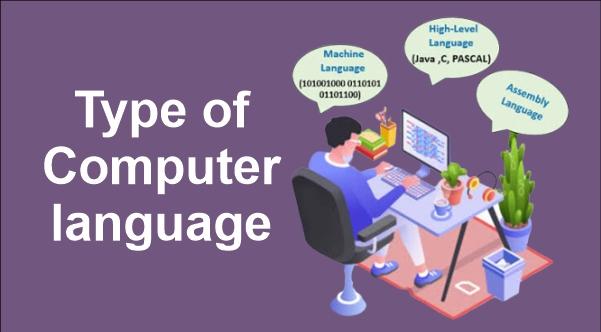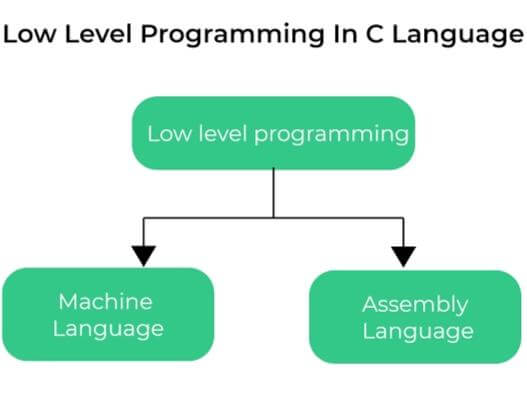Advantages and Disadvantages of Machine Language
Computers have distinct languages, just as people use language to communicate, and varied geographical locations have different languages. Different types of languages have already been created to carry out various types of computer tasks. In general, languages may be separated into two groups based on how well a computer can interpret them.
Types of Computer Language

There are two fundamental categories of computer languages:
- Low-Level Languages: A language that is aligned with a specific computer
- High-Level Languages: A language that is not machine-dependent
There are other varieties of language, such as:
- System languages: These are intended for low-level operations like managing processes and memory.
- Scripting languages: These have a reputation for being very advanced and powerful.
- Domain-specific languages: These are used in a small range of contexts.
- Visual languages: Non-text-based languages.
- Esoteric languages: Language used for humour or other non-serious purposes
Some of these languages might fall under more than one category. Therefore, they are not mutually exclusive. As languages have continued to advance, specific languages regarded as high-level are now viewed as low-level. Hence the words high-level and low-level could be more precise.
Let's Discuss a Few Major computer languages in Brief:
1. High-Level Languages
English-like forms are used in high-level computer languages. High-level languages were created to facilitate program writing in environments that supported their native languages.
High-level languages are symbolic languages that employ mathematics or English vocabulary instead of mnemonic codes. Every command in the high-level language is converted into several instructions in machine language that the computer can interpret.
2. Low-Level Languages
Low-level computer languages are very similar to machine code. Neither high-level languages nor English can be used to interact with computers, and it can only read and carry out commands in binary or machine language.

Low-level languages come in two different categories:
- Machine Language: A language that the hardware directly interprets.
- Assembly Language: A language that is perhaps more approachable and is similar to machine language.
1. Assembly Language
The development of assembly language addressed the various drawbacks of machine language. Another low-level but crucial language is this one, whose operands and operation codes are presented as alphanumeric symbols rather than 0s and ls.
The five-letter combinations of these alphanumeric symbols, such as ADD for addition, SUB for subtraction, START, LABEL, etc., are called mnemonic codes. As a result of this characteristic, assembly language is frequently referred to as "Symbolic Programming Language."
2. Machine Language

Fundamentally, a computer can only read machine language, often expressed in hexadecimal. A computer's machine code, intentionally represented by a set of binary numbers (bits) 0 and 1, is the only language intended for a computer to understand. The numbers 1 and 0 denote the existence or absence of an electric pulse, respectively. A computer can comprehend machine language because it can identify electric signals.
Low-level language flaws and faults are difficult to identify immediately and take a long time to fix. Compilers, interpreters, and translators are used to operate and carry out computer languages.
Machine language operates in two different ways:
- Opcode: An opcode is in charge of giving computers data and information.
- Location Code: It displays and depicts data and information for storing.
Features of Machine Language
The list below includes a number of the features of machine language.
- "Low-Level Language" is another name for machine language.
- In machine language, binary digits such as 0s and 1s are used.
- There's no need for interpretations since computers can understand binary codes.
- They were heavily utilized in the very earliest computers.
- Both learning and using them are complex.
- A program's writing and compilation took a decent amount of time to create.
Uses of Machine Language
- Since the computer cannot interpret human languages or codes, it must translate them into 0s and 1s, which are machine-readable. Its other names include binary language and machine language.
- First-generation computer system software was created using machine languages.
- A compiler and translator translate machine language into human-readable text.
- Operating systems, as well as other kinds of system software, have been developed with the help of machine language.
- Machine language is used to create and construct device drivers as well.
- Language assemblers, compilers, installers, print spoolers, network drivers, current applications, databases, and code interpreters are all made using machine language and low-level programming languages like C.
Advantages of Machine Language

- The machine language, also known as low-level language, does not need to be translated since it is already written in binary, or 0s and 1s, which the computer system can read and understand. The initial generation of computers makes tremendous use of this language.
- Compared to other goods, those created in machine language are significantly quicker.
- These machine codes are employed in the creation of advanced computer systems.
- System software essential to a computer system is created using machine language.
- Computer system development has been significantly impacted by machine language.
- The CPU directly executes the machine language or low-level instructions.
- Machine language programs and code run rapidly because they are in binary format.
- A translator is not necessary for machine language.
- In machine language, directives and instructions are given using a series of bits, where 0 denotes a false or off state, and 1 denotes a true or on state.
- The evolution of the computer system & operating system is due to machine language.
Disadvantages of Machine Language

- The main drawback of machine language is how difficult it is to develop, learn, and execute codes and algorithms.
- It is pretty time-consuming to fix flaws and mistakes in codes and programs.
- Only some people can memorize or even write the code.
- It is platform independent language.
- Machine language coding requires a significant amount of time.
- They tend to make mistakes by default and handle and maintain them.
- It is difficult to change.
- It's hard to recall instructions in numerical form, and this causes mistakes.
- The machine language codes are unique and cannot be reused.
- Learning and using machine language is a complicated programming language.
|





 For Videos Join Our Youtube Channel: Join Now
For Videos Join Our Youtube Channel: Join Now










